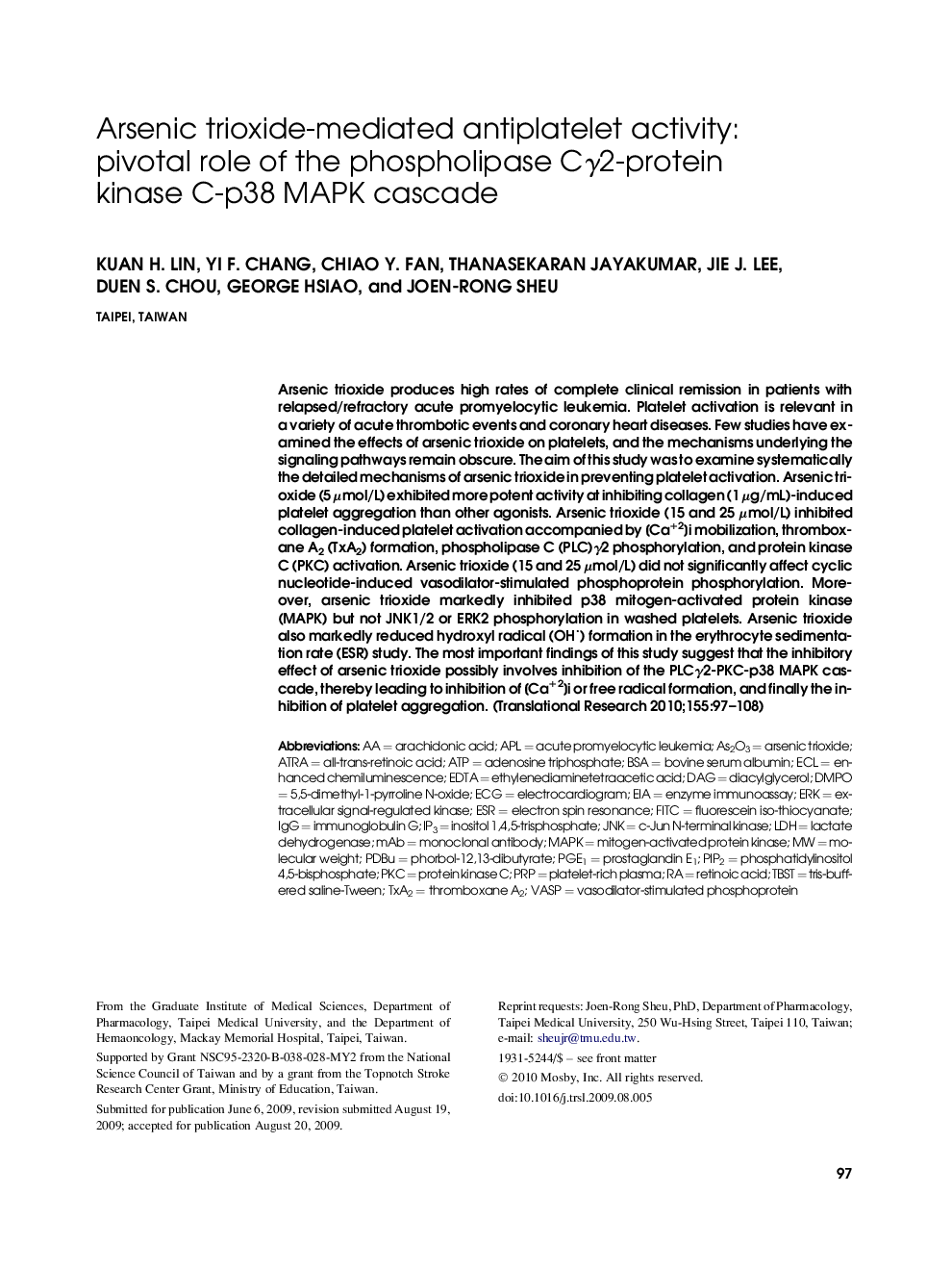| Article ID | Journal | Published Year | Pages | File Type |
|---|---|---|---|---|
| 3840991 | Translational Research | 2010 | 12 Pages |
Abstract
Arsenic trioxide produces high rates of complete clinical remission in patients with relapsed/refractory acute promyelocytic leukemia. Platelet activation is relevant in a variety of acute thrombotic events and coronary heart diseases. Few studies have examined the effects of arsenic trioxide on platelets, and the mechanisms underlying the signaling pathways remain obscure. The aim of this study was to examine systematically the detailed mechanisms of arsenic trioxide in preventing platelet activation. Arsenic trioxide (5 μmol/L) exhibited more potent activity at inhibiting collagen (1 μg/mL)-induced platelet aggregation than other agonists. Arsenic trioxide (15 and 25 μmol/L) inhibited collagen-induced platelet activation accompanied by [Ca+2]i mobilization, thromboxane A2 (TxA2) formation, phospholipase C (PLC)γ2 phosphorylation, and protein kinase C (PKC) activation. Arsenic trioxide (15 and 25 μmol/L) did not significantly affect cyclic nucleotide-induced vasodilator-stimulated phosphoprotein phosphorylation. Moreover, arsenic trioxide markedly inhibited p38 mitogen-activated protein kinase (MAPK) but not JNK1/2 or ERK2 phosphorylation in washed platelets. Arsenic trioxide also markedly reduced hydroxyl radical (OH·) formation in the erythrocyte sedimentation rate (ESR) study. The most important findings of this study suggest that the inhibitory effect of arsenic trioxide possibly involves inhibition of the PLCγ2-PKC-p38 MAPK cascade, thereby leading to inhibition of [Ca+2]i or free radical formation, and finally the inhibition of platelet aggregation.
Keywords
PIP2ECLTxA2IP3ERKPGE1VASPTBSTAPLAs2O3PrPPDBuPKCESRIgGtris-buffered saline-TweenFITCmAbDMPOJnk5,5-dimethyl-1-pyrroline N-oxideatRABSAc-Jun N-terminal kinaseinositol 1,4,5-trisphosphateMAPKAdenosine TriphosphateATParsenic trioxidebovine serum albuminMonoclonal antibodyEDTAEthylenediaminetetraacetic acidArachidonic acidall-trans-retinoic acidECGelectrocardiogramenzyme immunoassayimmunoglobulin GEIAenhanced chemiluminescenceThromboxane A2diacylglycerolRetinoic acidElectron spin resonanceDAGphorbol-12,13-dibutyratephosphatidylinositol 4,5-bisphosphateVasodilator-stimulated phosphoproteinlactate dehydrogenaseLDHAPL, acute promyelocytic leukemiaMolecular weightProtein kinase Cmitogen-activated protein kinaseProstaglandin E1platelet-rich plasmaextracellular signal-regulated kinase
Related Topics
Health Sciences
Medicine and Dentistry
Medicine and Dentistry (General)
Authors
Kuan H. Lin, Yi F. Chang, Chiao Y. Fan, Thanasekaran Jayakumar, Jie J. Lee, Duen S. Chou, George Hsiao, Joen-Rong Sheu,
